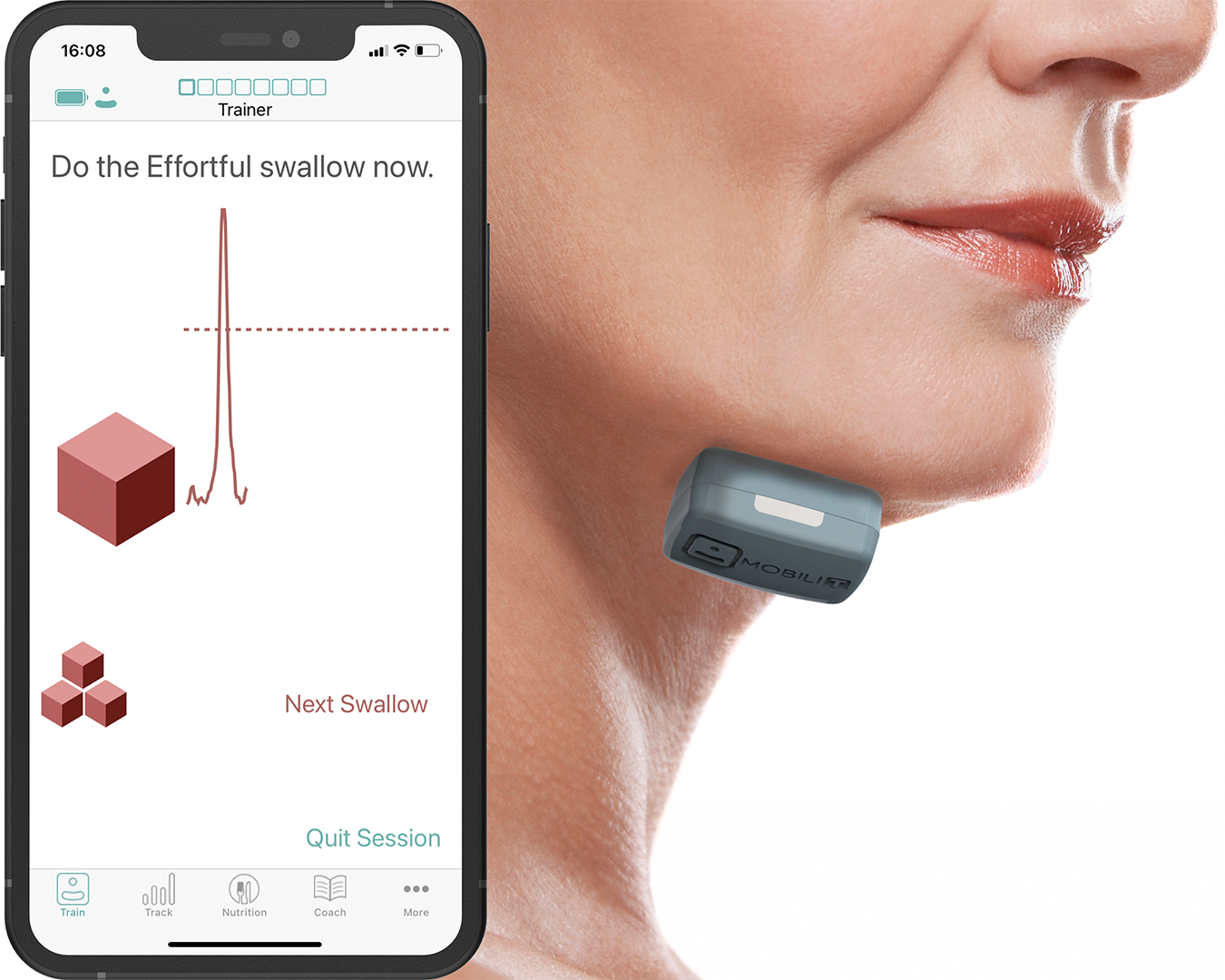Retraining the Brain
for a Functional Swallow
Summary:
Taylor Kae Hanh is a speech-language pathologist and private practice owner. She specializes in dysphagia and is an early adopter of technology to improve patient outcomes. In 6 weeks of therapy with Mobili-T, she was able to help her patient make noticeable improvements in her swallow even with her 30 year history of dysphagia. By using Mobili-T, Taylor helped her patient make faster, more effective changes contributing to better nutrition and quality of life.
Faster patient understanding of exercises
Functional swallowing improvements in a short timeframe (decrease in coughing and drooling, faster swallow initiation)
Quicker progress. Time saved in therapy
About Taylor Kae Hanh
Taylor Kae Hahn is the owner of Maumee Bay Mobile Speech Services and a dysphagia expert. When a client with a neuromuscular disorder came to her after 30 years of living with a disordered swallow, Taylor knew she would need more than traditional swallowing therapy to help this patient. She thought there must be a better way after 30 years of unsuccessful treatments.
The impact of dysphagia
Taylor’s patient coughed frequently, had difficulty moving food and liquid back, and initiating a swallow. All this difficulty meant she drooled persistently because she could not swallow her own saliva. As many do, this patient had come up with some workarounds. She would hold food or liquid in her mouth for up to two minutes until she could initiate a swallow. Sometimes, she would push on her cheeks to send the liquid back or use her fingers to push food back and try to trigger a swallow. She wore long sleeves to frequently wipe away saliva. Dysphagia was having a major impact on her nutrition and quality of life.
The role of technology in assessment and treatment
Taylor started with well-known technology used for assessment, in order to ensure her patient had a safe swallow. A modified barium swallow study (MBSS) revealed that she was not aspirating. A fiberoptic endoscopic evaluation of swallowing (FEES) allowed her patient to see the swallowing structures by video but was not giving information about how to move these structures. Then Taylor put a Mobili-T device on the patient’s swallowing musculature to give her visual biofeedback about when she was engaging her muscles. This is when something really clicked.
The patient could SEE how she was engaging her muscles to initiate a swallow, and with that visual feedback, she could replicate it. Meanwhile, Mobili-T proved easy for her patient to learn to use and continue its use during therapy. “This little device you stick on your chin!” Taylor described, and it was as easy as that for the patient to take charge of her therapy.
Sticking with the Program
Taylor’s patient continued to use the Mobili-T system, following the swallowing exercise program. She was motivated to do therapy and after 6 weeks she saw incredible results in her progress through Mobili-T’s program. “She loves it. She’s learning the form and realizing what she needs to do to get those faster swallows.”
Outside of the exercises and therapy, this translated into a much more prompt and effective swallow. “She can put a straw in her mouth and just swallow three swallows in a row without coughing,” Taylor described. Taylor also reported her patient no longer needs to wipe her mouth constantly as she is able to swallow her own saliva.
Why Mobili-T Worked
There is research detailing that the principles of motor learning apply to swallowing rehab. In short, this translates into the fact that to improve the swallow, therapy must focus on performing that swallow. Taylor realized how Mobili-T’s sEMG biofeedback helped this become a possibility:
“It’s the ability to SEE. It’s to be able to see when you are actually swallowing. To see the mind-body connection. It’s like her mind and her throat were just not connected until she could visualize what her swallow was doing.”
Taylor is looking forward to continuing to use Mobili-T on a variety of patients. “It’s really easy and universal to use. It’s compact and noninvasive. It’s not intimidating to patients. I would use it with any population.”
The Future of Dysphagia Therapy
Compensatory strategies and diet modification have historically been a huge part of dysphagia management. They do not alter swallowing function but compensate for the deficits. Taylor places a big emphasis of her practice on thinking outside these options to ways that she can help patients make progress towards improvement.
“It has been revolutionary for these clients that have had no idea how to change the biomechanics of their swallow and have just been compensating in these wild ways. I really think it’s important for more therapists to learn about dysphagia and therapy and to get rid of the old things that we’ve been doing that are just not helping clients.”
It’s working with innovative therapists like Taylor, and her patients that keep us striving towards improving outcomes using technology like the Mobili-T system. Thank-you to Taylor Kae Hahn for sharing her story!

Mobili-T® is a small, portable system that utilizes an under-the-chin sensor and connected mobile application for patients & clinicians to visualize swallowing exercises. Clinicians can use the Mobili-T in the clinic, and send them home with patients for continuity of care. Mobili-T continues to evolve as a result of our high-performing team members, who are all critical thinkers and who thrive on solving real-world problems with input from our patients and clinical users.
